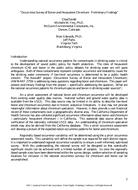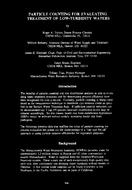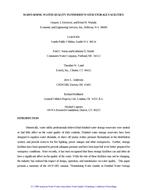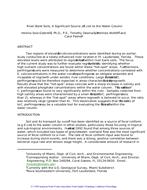Provide PDF Format
AWWA WQTC57138
- Occurrence Survey of Boron and Hexavalent Chromium: Preliminary Findings
- Conference Proceeding by American Water Works Association, 11/01/2002
- Publisher: AWWA
$12.00$24.00
Understanding national occurrence patterns for contaminants in drinking water is critical to the development of sound public policy for health protection. The roles of hexavalent chromium (Cr6) and boron in the public policy debates for drinking water are still quite ambiguous. Both of these contaminants represent complex occurrence and treatability issues for the drinking water community if low-level occurrence is determined to be a public health concern. This paper will present preliminary findings from the project, specifically addressing the question, "What are the national occurrence patterns for chromium species and boron in drinking water sources?" An a priori assessment of national boron and chromium occurrence will be developed from existing water quality data sources. National surface and groundwater quality data is available from the US Geological Survey (USGS). This data source may be limited in its ability to describe low-level boron and chromium occurrence due to historic analytical limitations. It also may not provide meaningful information about chromium speciation. However, it does provide a vast historical record of these contaminants over a geographically diverse area. The California Department of Health Services has also collected significant occurrence information about boron and chromium, particularly hexavalent chromium, in California. This statewide data source allows for verification of the nationally collected USGS data. An understanding of chromium speciation trends may also be derived from the California database. This a priori occurrence assessment will develop a picture of the expected national occurrence patterns for boron and chromium. Regionally based occurrence variability will be determined using the a priori occurrence assessment results. This variability will define the sample size required for each distinct region. It is important to understand regional occurrence variability to ensure a well-informed, optimized survey. With this understanding, the national survey will be designed so that statistically significant results can be achieved with a limited number of samples. So once the regionally based sample sizes have been determined within the survey design, random selection of sampling locations for inclusion in the national occurrence surveys for chromium and boron can be accomplished. Includes 8 references, tables, figures.
Related Products
AWWA WQTC50404
River Bank Soils, a Significant Source of E. coli to the Water Column..
$12.00 $24.00





